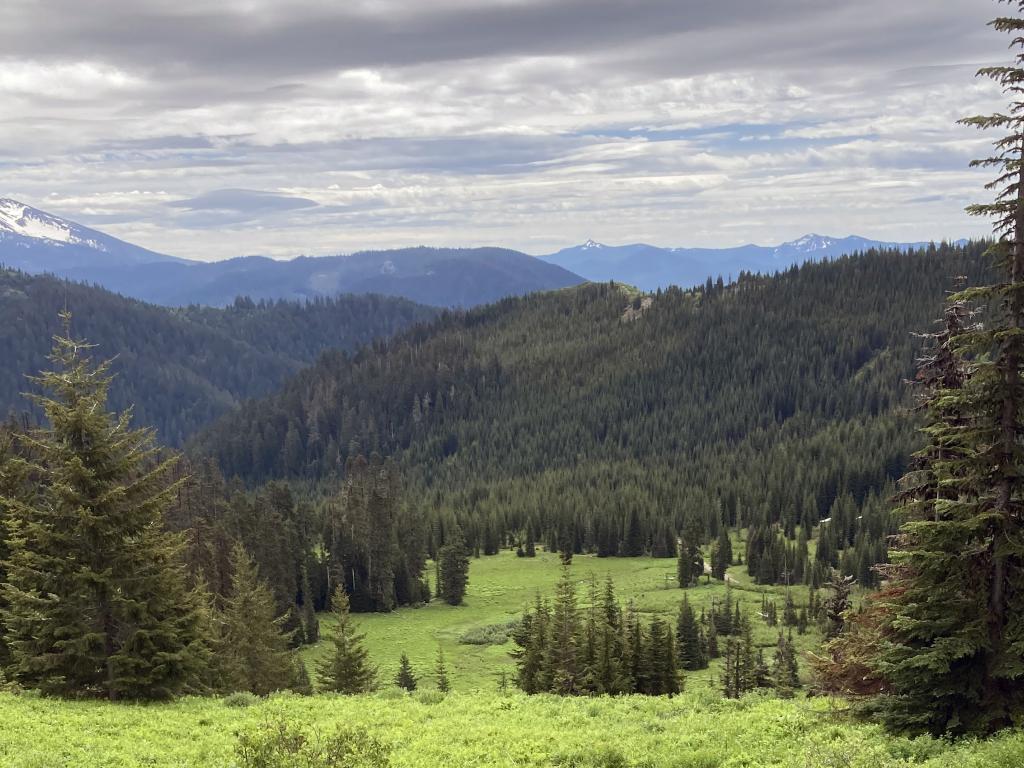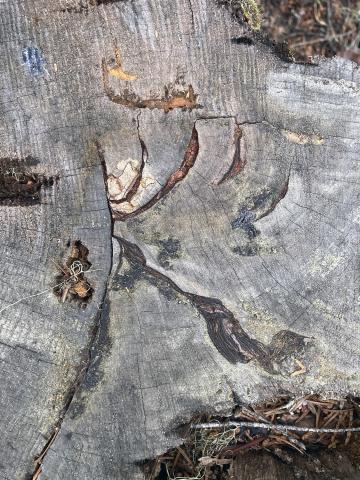
In the temperate rainforests of Oregon’s western Cascades, the trees tell tales of the past.
Their trunks and rings reveal signs of careful stewardship by generations of Indigenous peoples living in the area, like cultural burning and selective use of natural resources. These traditional forest management practices bolstered the forest’s health, protecting against severe wildfire and preserving resources for future generations.

An ongoing project from the UO’s Institute for Resilient Organizations, Communities, and Environments (IROCE) aims to piece together these historic land use practices and create a template for sustainable and resilient forest management going forward.
“The idea is to bring these various pieces of information together to better understand how people stewarded the forest in the past,” said Michael Coughlan, an IROCE environmental anthropologist who is leading the project alongside Bart Johnson at the University of Oregon and other collaborators at Oregon State University.
They’re doing this work in coordination with representatives from the tribes who lived on this land before European colonizers displaced them, such as the Grand Ronde, Siletz, Klamath, and Warm Springs tribes.
“Our goal is to co-develop our methods and outputs with tribal input,” Coughlan said.
The team is collecting their data in the forest that flanks the Middle Fork of the Willamette River, south of the town of Oakridge—pulling together archaeological evidence and tree ring records.
For example, many ponderosa pines in the area are “culturally modified,” bearing bark-free scars a few feet high that heal over on their edges over time. In spring each year, Indigenous people peeled off the outer bark and scraped off the inner cambium layer for a sweet food. Stripping bark all around a tree can kill it, but these cuts were sized carefully to allow the tree to continue to grow. It’s one example of sustainably using the forest’s resources.

Careful assessment of trees at multiple locations in the area also reveals evidence of past cultural burning—small, controlled, low-intensity fires set by Indigenous people. Fires leave distinctive scars in the tree rings, so by looking at slices of trees, researchers can tell when particular areas were burned.
“Cultural burning is about burning just a little bit at a time,” Coughlan said. “It’s a long-term relationship with the land.”
The frequent small fires benefited the landscape and also protected it against major wildfires.
This style of forest management is a big contrast to modern policies, which until recently have focused on fire suppression over all else.
But fire is a healthy and natural part of forests in the Cascades and throughout the western US. The trees and other vegetation evolved with fire. Some native plant species need fire to reproduce, while others benefit from the reduced competition and increased space to grow after a fire. Restricting burning lets fuel loads build up, so when fires do happen, they easily blaze out of control.
Today’s prescribed burns, designed to lower fuel loads and ward off conflagrations, are still usually more intense than traditional cultural burns. Coughlan and his colleagues hope the insights from their work will guide future forest management in the Cascades and beyond.
“I hope we can actually push the Forest Service towards the idea of reintroducing cultural burning and reengage with tribes and seek their input on land management,” Coughlan said. “I see these things as part of a bigger goal of making us more resilient towards wildfire disasters.”
